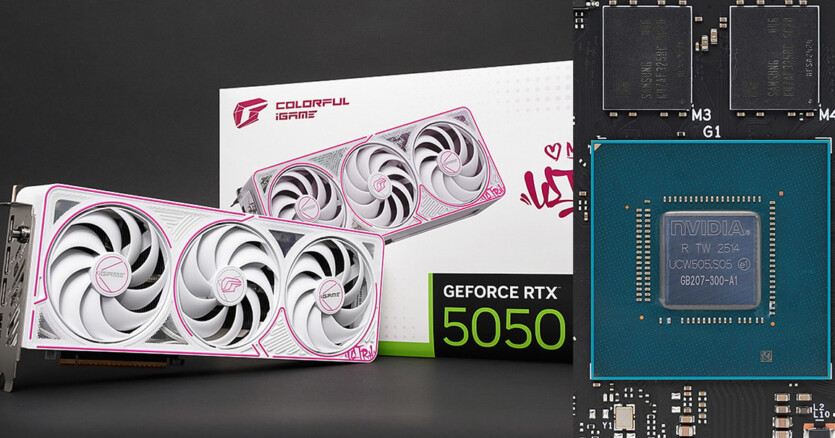
NVIDIA did not provide the RTX 5050 for preliminary reviews, but some journalists have already managed to do so and test the card in full.
Source QuasarZone also did not receive a sample and drivers for review, however general availability made testing possible. This situation has happened three times in a row recently: with 8 GB RTX 5060 Ti, RTX 5060, and now RTX 5050. For the latter two, there was virtually no official review opportunity — despite the fact that the video cards XX60 and XX50 have always been the most popular among gamers.
The performance of 15 games in 1080p resolution was tested on a system with an AMD Ryzen 7 9800X3D processor and DDR5-6000 memory. Performance with DLSS 4 was also evaluated, as well as power consumption, noise, and temperature parameters. Detailed results can be seen in the slides below and in the original review (in Korean).
The review confirms that the RTX 5050 is at least as fast as the Intel Arc B580 (97.4% of the latter’s performance), and lags behind RTX 4060 (93.8%). The video card delivers performance similar to the Radeon RX 7600 (without XT, 8 GB) and outperforms the RTX 3060 (113.4%).




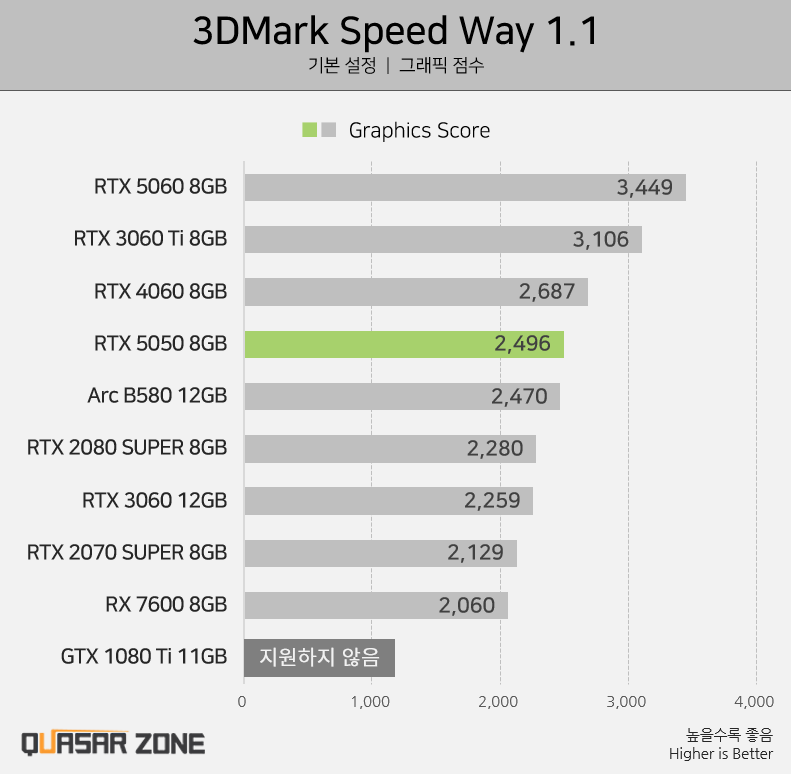
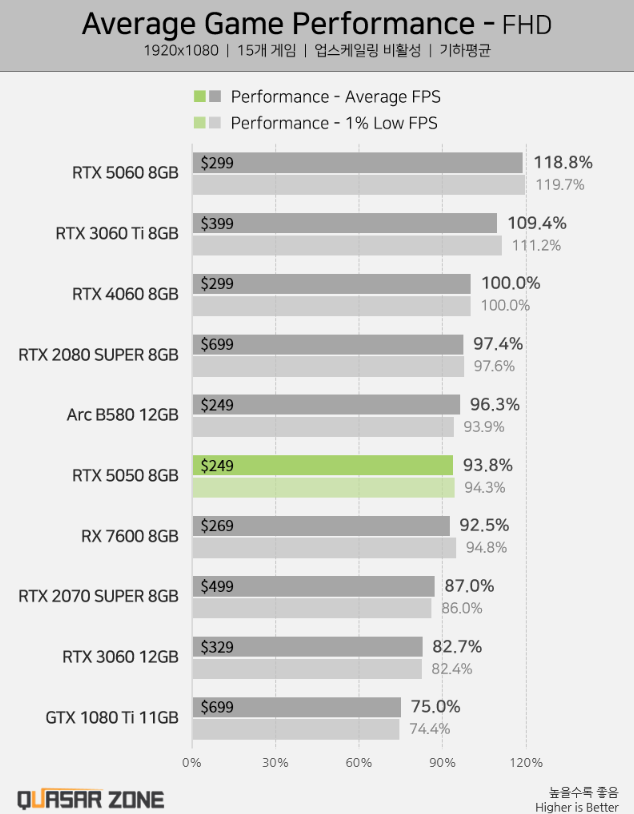
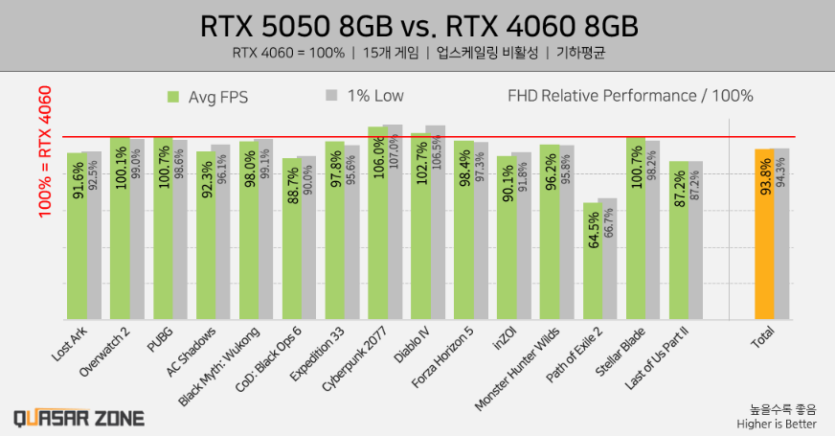
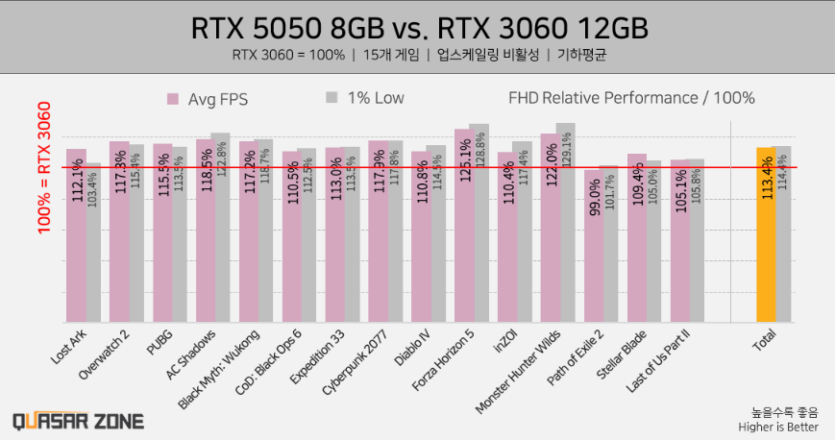
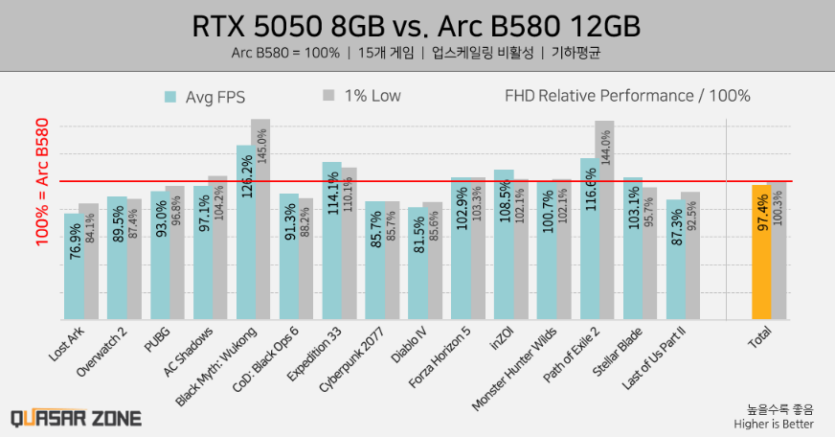
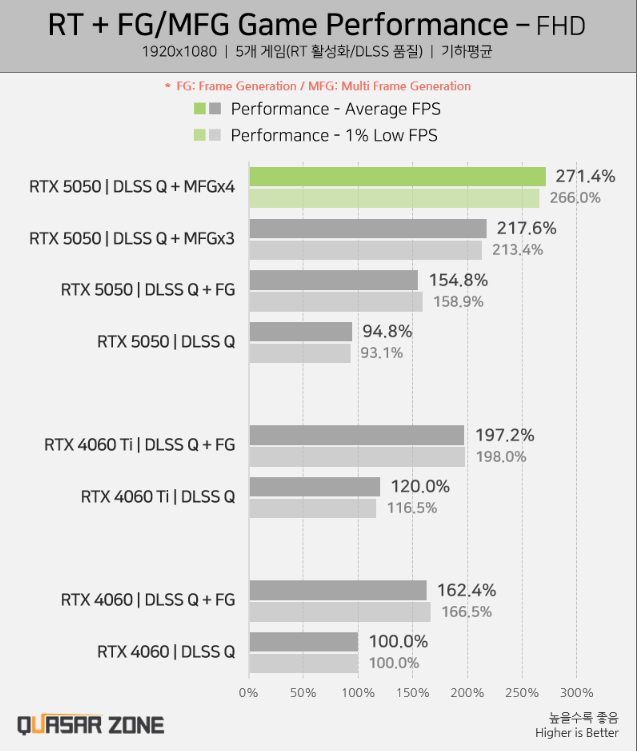
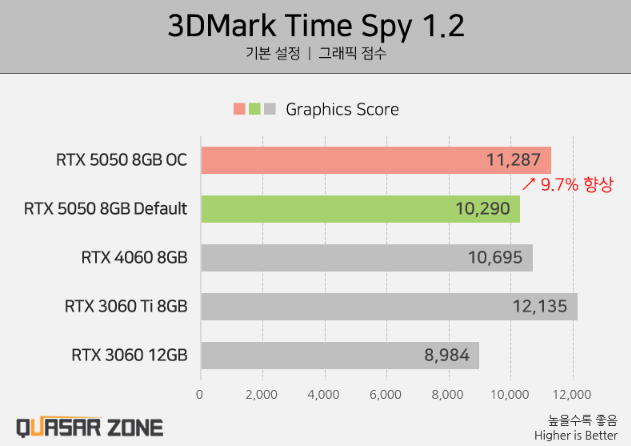
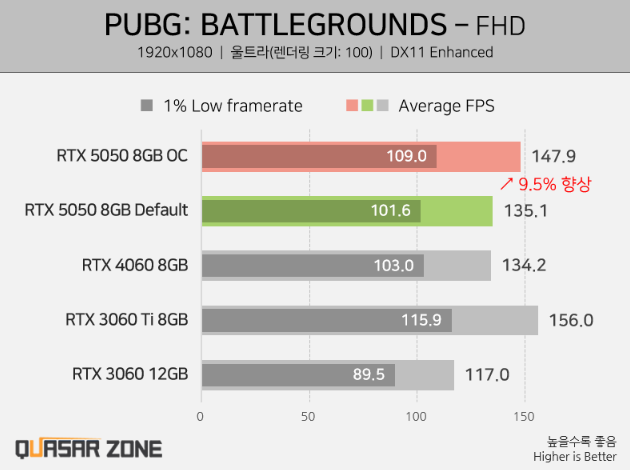
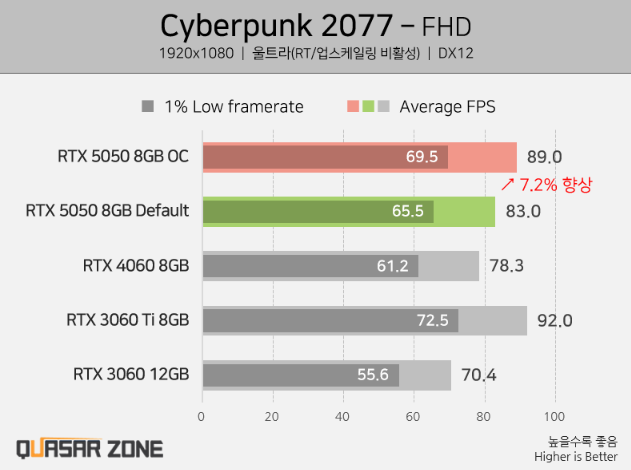
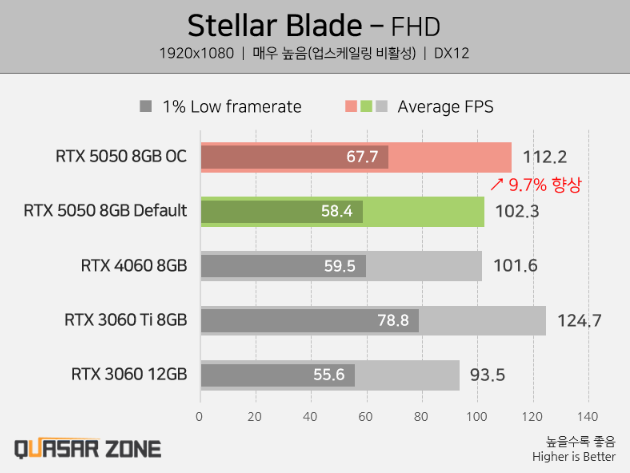
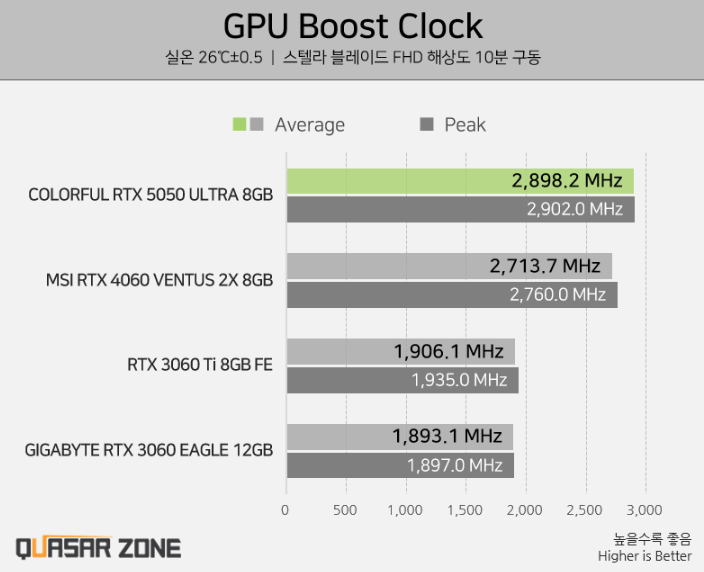
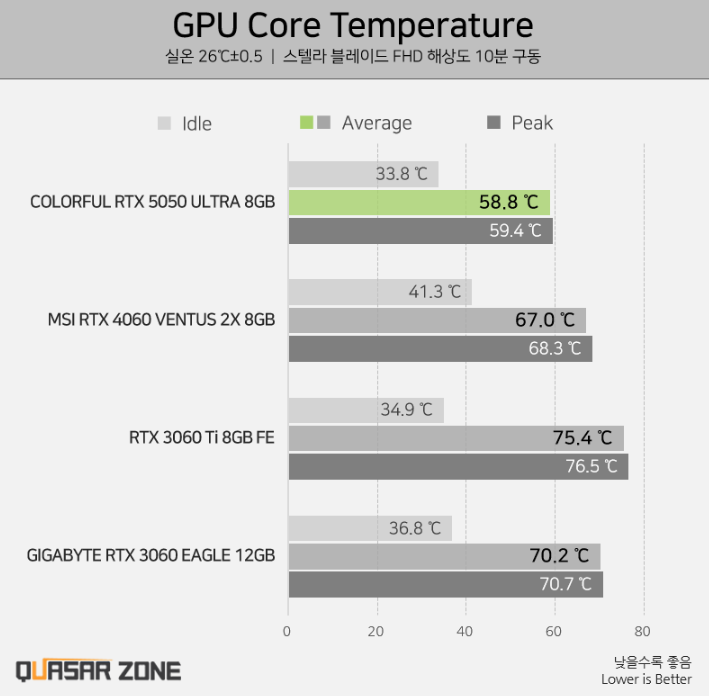
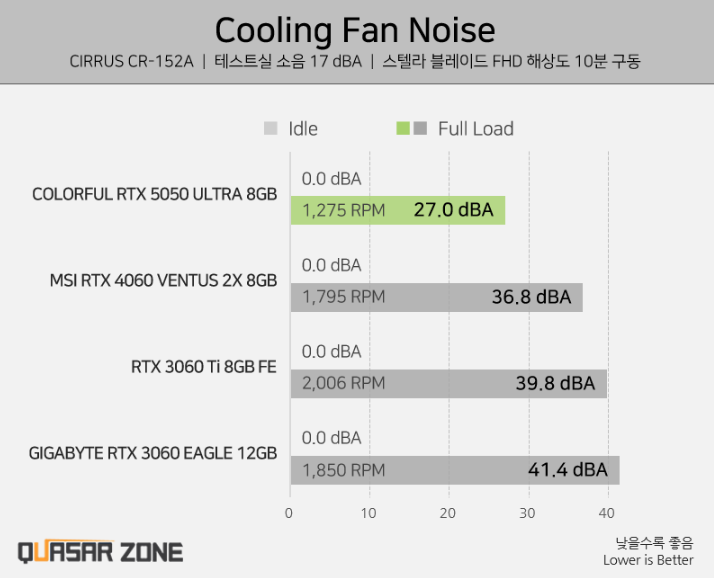
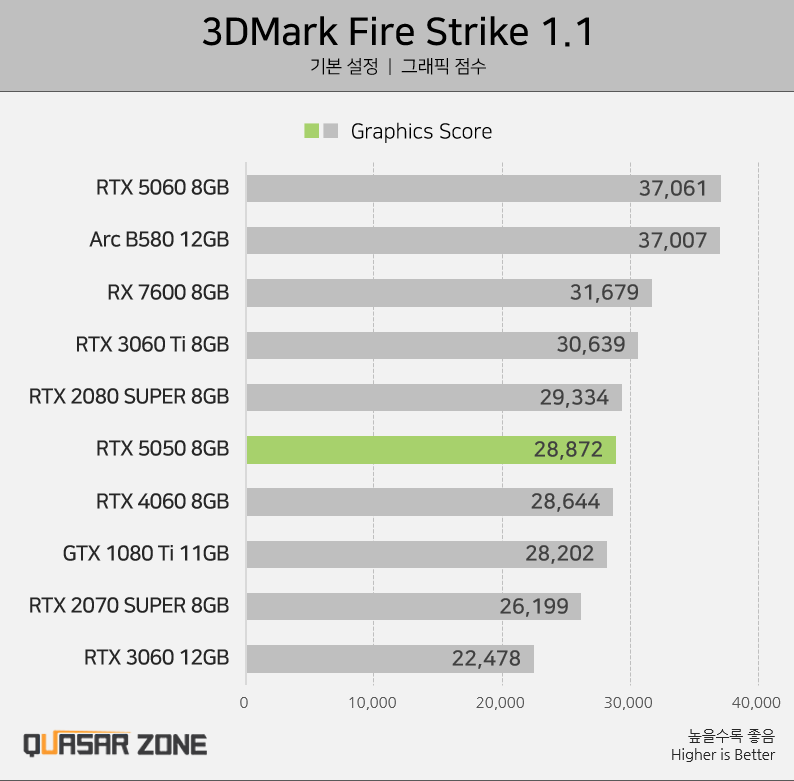
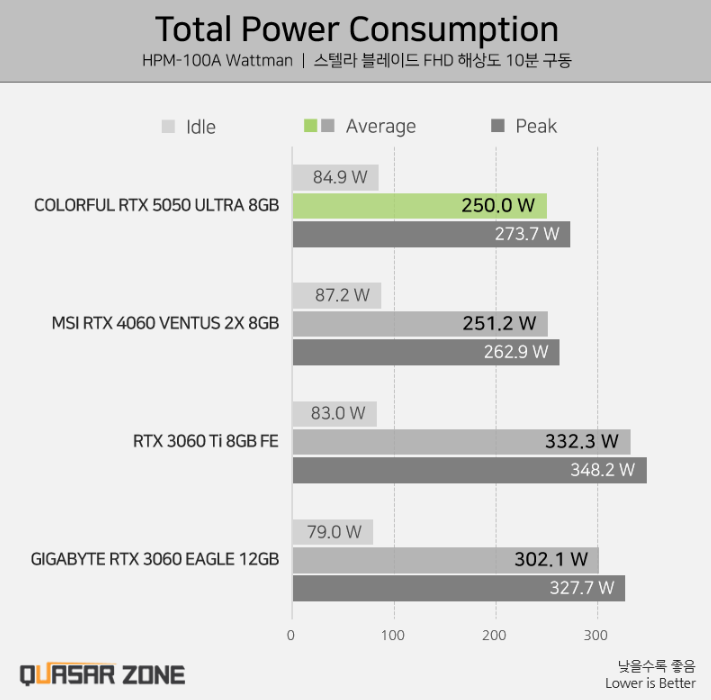

An interesting point to note is the power consumption: although the RTX 5050 has a TGP of 130W and the RTX 4060 — 115W, their actual power consumption is almost the same — around 130W. Since the 5050 less productive than 4060technically, the previous generation video card is more power efficient.
Even overclocking does not give the NVIDIA RTX 5050 an advantage. Performance improves by 7-10% when overclocked manually. The potential is limited due to the power locked at 130W. So for pure performance, the Arc B580 (which has 12 GB of memory) and RTX 4060 seem to be the best options. But you should keep in mind the extra frames per second (MFR) generation on the RTX 50.

Spelling error report
The following text will be sent to our editors: